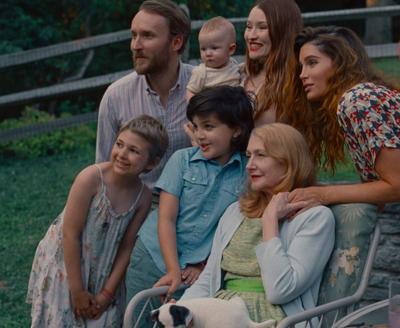At its most basic, “Monica” is a soft sigh of a movie, a tender character study built around smartly constructed moments. There are quiet moments. There are powerful moments. There are meaningful moments.
One moment, however, stands out as particularly moving and particularly emblematic of writer-director Andrea Pallaoro’s unconventional but affecting portrait of one woman’s lifelong heartbreak.
It comes about two-thirds of the way through Pallaoro’s film, and it begins with the face of the title character (Trace Lysette) filling the screen.
Old-school framing
It’s not the typical wide screen to which most moviegoers are likely accustomed. Rather, Pallaoro opted to shoot his film using an old-school 3:4 aspect ratio — more square than letterbox, like an old pre-flat-screen TV. Here, it makes the world seems smaller, more intimate.
As the camera focuses on Monica, she looks plaintively off-screen and into the eyes of her long-estranged, now ill mother (New Orleans actress Patricia Clarkson), to whose face she has just applied makeup.
Clarkson, who is off-screen during all this, slowly raises her hand into the frame. She’s holding a compact mirror, admiring her daughter’s handiwork.
Just as the mirror hits mid-frame, she pauses, her own smiling visage reflected back at her but framed by Monica’s hair, chin and cheekbones.
The effect — transposing a dying mother’s features onto her wounded daughter’s face — is as profound and affecting as it is elegant.
Movie in miniature
Fleeting though it is, it also feels like the movie in miniature. Both are artful, beautifully conceived and expertly executed.
At the same time, “Monica” eschews convention, telling its story at its own, deliberate pace, inviting — if never quite demanding — its audience to come along.
That is to say, “Monica” is a patient film for patient moviegoers. But those who give themselves over to it will be rewarded.
Admittedly, the story undergirding it all is but a mere sketch: Monica, a trans woman who has endured a lifetime of hate and heartache, returns home in the hopes of reconnecting with the family that once rejected her — before it’s too late.
Along the way, Pallaoro’s camera has a habit of lingering on otherwise mundane things: the back of Monica’s head, her tattooed shoulder blades, someone driving, someone smoking, someone thinking.
Moving silence
Rather than slowing things down, those long, languorous stretches of silence — along with Lysette’s nonchalant naturalism — more often than not contribute to a fly-on-the-wall aesthetic that amplifies the emotion at play.
Don’t expect melodrama or tension for the sake of tension, though. Lysette’s Monica — who is far more flesh-and-blood than most depictions of trans people on-screen — doesn’t want anyone’s pity. Neither is she there for comic relief.
Rather, she is a woman of dignity. Her past trauma might have left her guarded, measured and maybe a little exhausted. But she is also determinedly unapologetic for being who she is: a human being with dreams, desires and a heart that has been broken more times than anyone deserves.
As character studies go, “Monica” is an especially timely one, determined to contribute to the current conversation about acceptance and understanding. At the same time, beneath it all lies a more universal concept.
Ultimately, it’s about family and how precious it is — and how you can, indeed, still go home again (or invite someone home again, as the case may be) to replace past regrets with your own quiet, powerful, meaningful moments.
Mike Scott can be reached at moviegoermike@gmail.com.

